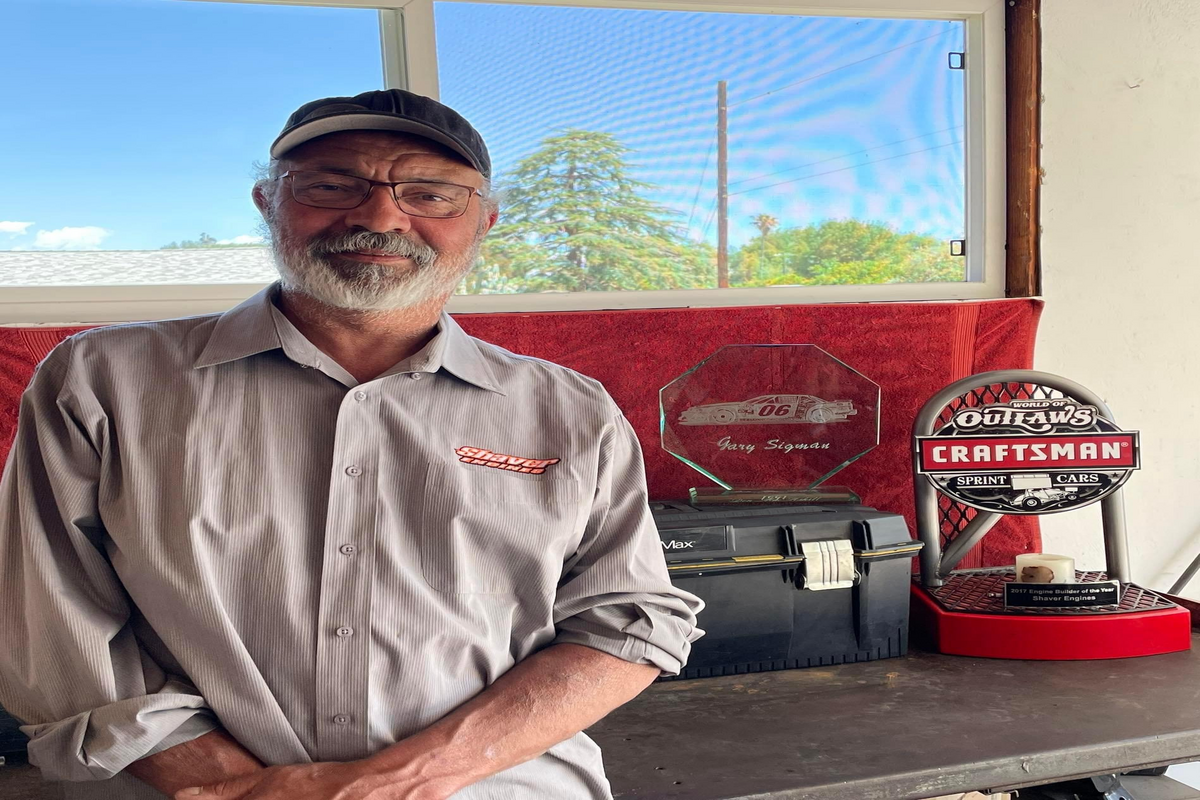Today I’m going to talk about the evolution of the Shaver Racing Engines design for the World of Outlaws sprint Car series. Traditionally, Shaver was a Chevrolet expert, and we worked with Chevy for a long time. I get many questions about the differences between the Chevy and Ford engines. One notable difference is that Chevrolet motors are built mostly using components made by aftermarket manufacturers based on Chevy’s specs, but Ford wanted to retain the process in-house. This was especially true regarding the cylinder head and the block, which are Ford built.
When Ford took over as the sponsor for TSR, Shaver started out in an advisory role, but not as the lead designer on the engine. Andy Durham, who had already been working with Ford on some other World of Outlaws’ projects, took the first crack at the new engine design. Shaver came up with a design for the cylinder head and gave Andy some tips about methanol, since he had more experience with gasoline engines, and we helped out with the testing with his first prototypes.
After that, Shaver took over the development in our Torrance facility. Based on what we have learned from both testing and real world track experiences, we are currently on stage four of the cylinder head design. One reason why Ford was not in the WOO series to start with is due to the guidelines. An early Ford engine design was ruled ineligible because of the canted valves offering an advantage for efficiency of air induction. The WOO rules require that valves must be in a straight line.
It’s important to note that the engine we build for TSR is based on a Windsor Ford engine block—it’s not a Chevy or a Ford—it’s a Shaver Racing Engine but it’s built with Ford parts. One reason why this engine has so much power is the port shape, which we learned from Chevy and used to improve the Ford head.
In a Chevy, the valves are positioned exhaust/intake/intake/exhaust—as you can see in this picture, and the induction runners are attached to each other. In the Ford, the induction runners are individual, spaced apart for better efficiency, and the valves are alternated exhaust/intake/exhaust/intake, which also enhances efficiency.
Initial results were beyond expectations!
The efficiency we achieved with the valve changes increased power to the point that the first pulls on the dyno astonished everyone. Because of the limitations of driving on dirt, we had to reduce the power that we were giving the drivers. Since then, we have worked with the team to focus on finding the right mix of power and finesse to reach maximum control.




Great Article . Answered some questions I was wondering about.
Thanks. Let us know if you have any topics you’d like to hear about.
This may be off limits if so, I understand but the Ford combustion chamber